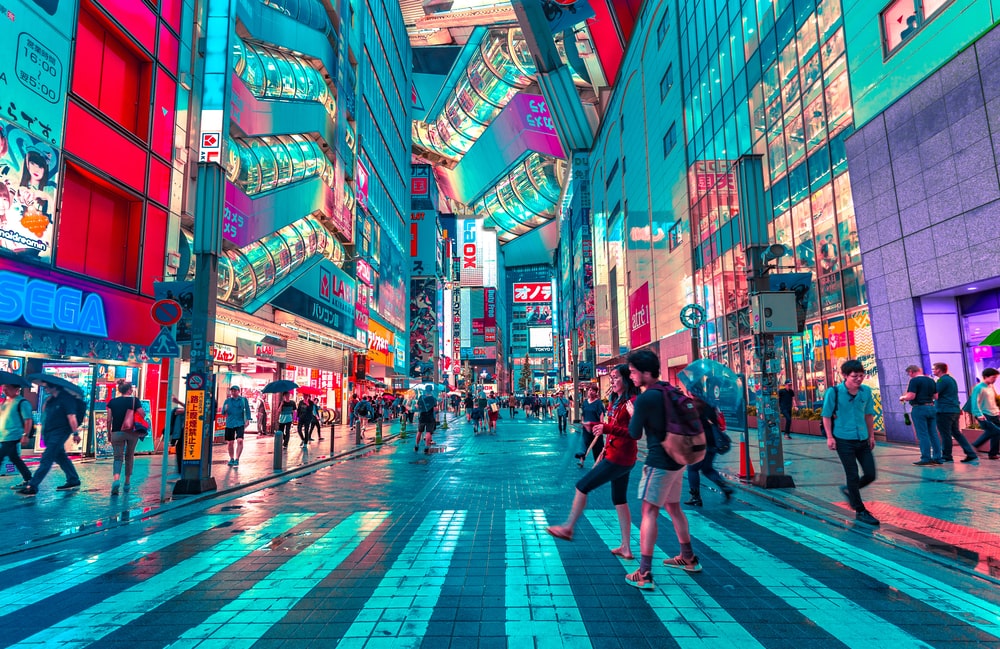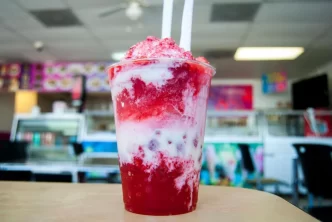14 Things To Know Before You Go To Tokyo
Tokyo will be the most amazing food festival on the planet
Visiting Tokyo. Not New York? Not Paris? Not Bangkok? Each of these cities has vast, gorgeous cuisines that are worthy of an entire lifetime of exploration however none of them can compete with the depth and variety of food offerings offered by Tokyo’s culinary hordes. It’s the dimension. New York City has some 30000 restaurants. Tokyo has 160,000.
However, Tokyo’s status as the most thrilling eating destination isn’t just a number thing, it’s a qualitative one. There are a myriad of factors that are what make Japanese food unique–incredible obsession with ingredients technological precision, thousands of years of fine-tuned cuisine, but the most important of them all is a simple idea that is called the concept of specialization. It is true that in the Western globe, in which miso braised short ribs are served with white truffle pizzas as well as sea bass ceviche, restaurants set up massive nets and attempt to catch as many fish as they can, but in Japan the key to success is focusing on one thing to do it well.
There are people who dedicate their entire lives to grilling beef intestines or slicing blowfish or kneading buckwheat into tangles of chewy noodles–microdisciplines with infinite room for improvement. Shokunin is the concept behind , an artisan who is devote to their craft is the foundation of Japanese culture. If you’re looking to understand the reason why Japan’s food culture is unique for its food culture, then look no further than the Shokunin. They are the people who strive for perfection to the last decimal point, and whose determination and determination wear away the rough edges of life’s most difficult problems like a river of mountain water flowing over a granite stone. Tokyo is the capital city with 10 thousand Shokunin.
Importance Of Smaller Portion
A smaller portion is more effective. It isn’t important what you’re eating: sushi, eel noodles, sweets, cocktails, etc. Smaller establishments are where Shokunin work. It can be a bit intimidating to enter a six-seat bar, but that’s the place to find the best of the best. A place where the chefs and staff (most likely spouse and husband) remain committed to their work. The most exclusive establishments require an invitation or Japanese guest to join you, however the city is fill with cozy, intimate establishments waiting for a chance to surprise you.
The HTML0 code isn’t all that costly.
Legions of potential tourists skip the idea of a trip to Japan (and Tokyo specifically) due to the false belief that Japan is a bit expensive. In comparison with Thailand and Central America, it’s not inexpensive. When you compare it to it’s counterparts like the UK, Switzerland, or any northern European country, Japan looks affordable. The most expensive things are cab rides, ryokans and expensive hotels, drinks in elegant bars and formal sushi restaurants as well as Japanese beef.
The things that aren’t too expensive is public transport, business hotels, drinking at izakayas conveyor sushi, gorgeous dishes of noodles. It’s hard to live on $22 per day, but you can rest and eat good in Tokyo for just $100 if you’re cautious. Hotels are available at $70 per night and an unlimited day pass for public transportation at five dollars, as well as amazing food options for less than $10 that you’ll find on other continents.
Language
English is rare. Not as scarce as the solar eclipse, but close. There are a few people on earth who have a lower proficiency in English than the Japanese and that means you’ll have to improve your body language and learn some key phrases, and have the ability to be a bit silly throughout the endless stream of embarrassing moments that will surely be a part of your life throughout the country.
Learn ten or fifteen words for food that you can utilize in the event that you go to the restaurant and are unable to read any single letter in the three Japanese alphabets. Remember, above all, the word hai. It’s“yes” as well as “okay” which is the most important term in the English dictionary. It’s a single high-pitch word that you can transform into an exchange. Tone and inflection can transform the word into a variety of various meanings, ranging from “Yes, I’m a huge fan of this strange and beautiful country” to “Of course I’d like you to soak me in unfiltered sake.” In addition it’s hard to turn down the Japanese do you? You wouldn’t believe it.
Summer Games
Be into to the Olympic spirit. Tokyo takes its responsibility as host for the 2020 Summer Games very seriously. This means billions of infrastructure investment that is gear towards making the city appealing to visitors from all over the world. Major upgrades to the railway infrastructure, an increase of luxury hotels, a frenzied revamps of the city’s tourism centers, and an increase in menus and signage that are in English are all are an integral part of establishing Tokyo’s reputation as a top destination.
The Japanese government is hoping that the Olympics will propel Tokyo as well as the remainder of Japan into the new era of tourism (in 2016 Japan was ranked fifth most visited country in Asia) If they’re correct, then book your tickets today and soak this all in before the world gets more knowledgeable.
Subtlety is the king.
Japan is a tradition-based society with deep-rooted customs and rituals that may be difficult for the uninitiated, but doing it correctly can change the way you interact with your guests and your guests. A few rules to keep in mind The concept of personal contact is generally not permitted in Japan So be aware of your body and prepare to bow instead of shaking hands (a gentle bow to relatives and friends, an extended dip at the waist for business relationships or those with a lot of weight). Keep your time.
Japanese are known to make the Swiss appear lazy with time when they meet friends or making a reservation for a meal It is a good idea to arrive five minutes earlier. Jaywalking , or any other form of violation of the rules is more heavily considered to be a crime than you imagine and should be avoided. In general, stay clear of any activity that draws attention to you or others who are around you. Although you’ll never be able to blend in, Japanese value subtlety over the egocentric nature of their people.
Get under the ground
Tsukiji, the largest market for fish in the world, could be Tokyo’s most popular food-related attraction, but the huge crowds, restrictions on tourists, and a bleak future make it an unimportant stop nowadays. If you’re looking for an entire dose of Japanese food and culture. Go to the depachika which is the basement of a the department store that is devote to the entire spectrum of Japanese food culture.
Imagine the world’s top food court mingled with the most renowned of high-end markets, a sprawling Japanese food and drink experience that includes all kinds of street food like onigiri and yakitori to an extensive range of sake and whisky to a posh fruit shop that includes fruit Sommeliers. Visit for free samples and stay to enjoy the show. Take home a suitcase worth of take-home of Japan’s finest ingredients: dried seaweed , which is from Hokkaido and rice from Niigata; yuzukosho which is a chili-spiked citrus paste which you’ll want to apply to every surface.
Pasmo
Pack a Pasmo. Tokyo’s subway system is acknowledge to be able to send even the toughest of travelers to the brink of their knees. Two distinct transit systems — the government-owned Toei Subway and the private Tokyo Subway–only add to the difficulties; together, they manage thirteen separate lines that span 300 km of tracks. The first step to simplify things is to purchase the Pasmo the life-saving super-smart card that is able to purchase everything from buses to subways to vending machine snacks. You can load it with yen and move freely between modes of transportation and then visit a convenience store and use it to purchase eggs Sandoand an icy cold Biruas as a reward for your smart journeys.
Concierge
The concierge is your most trusted friend. Tokyo hotels typically have small rooms, however the space they lack they make up for in the service. Even the smallest of business hotels will be more than happy to assist you with the essential elements of planning, from exploring the city’s sprawling contours to arranging reservations at top restaurants.
(Many famous restaurants will not take calls from unknown numbers however, hotels will almost always be able to connect.) Before you travel to a new location you should ask an employee for an image of the detail page for the restaurant in Tabelog (like this one for Saito). It is essential to have this information when traveling in a taxi, or if you lost on the streets and need help from locals.
Cash-in
It may be shocking to know that the nation that invented the bullet train and robotic strippers is still relying on hard currency, however establishments ranging from five-star ryokans to the top sushi establishments refuse to accept credit cards, so you’ll have to carry a large amount of yen at all times. There are very few Japanese ATMs accept foreign credit cards. Instead, you should utilize the machines at 7-Elevens and post offices, the two most trusted ways to withdraw cash.
Izakaya
If you are unsure, try go to an izakaya. Finding out the best place to eat and what to order is difficult when you first arrive into Tokyo The izakaya can be your answer. It’s the Japanese equivalent to the Spanish tapas bar The izakaya can be a place where people go to sip (rice) wines and enjoy small portions of delicious food. The menu is diverse and is a kind of the best dishes of Japanese cuisine , with something for everyone Sashimi, tempura, the karaage(fried chicken) and grilled fish stews of meat and vegetables. Izakayas are available in all sizes and shapes including intimate Michelin-starred restaurants to noisy, smoke-filled taverns however, good times and plenty of sake are the glue that connects them.
Food
Enjoy food like people who are Japanese. The family-style dining is a popular choice in Japan and don’t be shock when everyone shares the bill equally, no matter the amount you eat or drink. The benefit is that you’ll be able to sample an array of food. The people of Japan are known to do “sankaku tabe” or “triangle eating.”
If you’re serving multiple dishes, as is the norm when eating Japanese meals, you shouldn’t eat off just one dish at one time. Instead, you should alternate between the meals: eat a piece of the radishes you’ve picked and sip a little of miso soup and then savor a bite of rice before starting all over. Sankaku tabe is believe to emphasize the ways that each dish pairs with another and the chef has carefully plan. Other useful rules to follow when navigating etiquette
Be sure to be sure to kanpai prior to taking that first sip of alcohol or sake. Be sure that everyone else has an empty glass, and wait for one of your drinkers for them to take your drink. Do not eat until everyone has served. There’s a good chance that people will be insisting that you eat food prior to eating However, the best option is to decline and wait until everyone is eating before them. The same way do not reach for the last portion of food when you’re sharing. Everyone will be around the table several times , offering the food to other guests But be sure to be a good example of resistance.
Don’t bother with that tip
You’ll experience impeccable service in Japan however you don’t need to fret about the addition of 20 percent to every meal. If you try to give a tip, your server will be made to decline or demand that they give you a change, and you’ll cause them to feel uncomfortable. Instead, show your appreciation by saying an enthusiastic “gochisousama” (basically “that was delicious”) after you’re finished with your meal.
Tickets To Freedom
Visiting Tokyo, Get your ticket to the freedom you deserve. Visiting Tokyo is awe-inspiring and worthy of an entire lifetime of exploration however, so is the rest of the country and the train system in Japan makes travel across the country an absolute pleasure. If purchased outside of the country (through an agency for travel, online reseller or at airports that are international)
A Japan Rail Pass permits unlimited travel for up to 3 weeks with all except a handful of special trains that run in Japan. It will not only help you save money as well as time (a pass is priced at about $260 for unlimited travel within a week and doesn’t require reservations on all trains) however, it transforms Japan into a tourist’s buffet and lets you improvise your travel plans based on your preferences for climate, culture, and regional food. Travel anywhere and anywhere, but never get on trains without a bento box and beverage.






